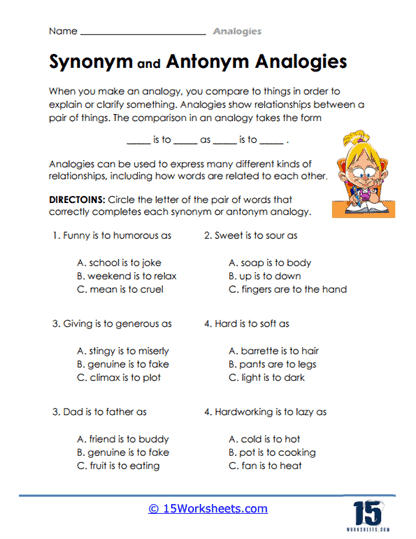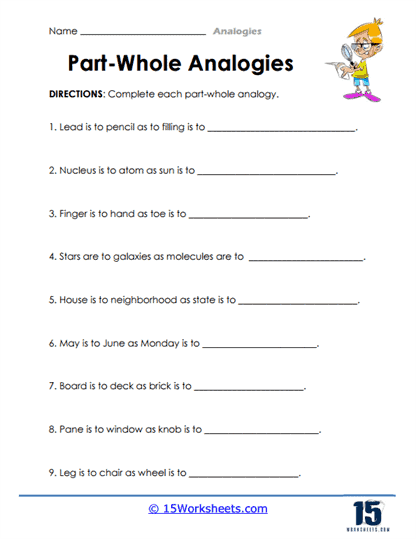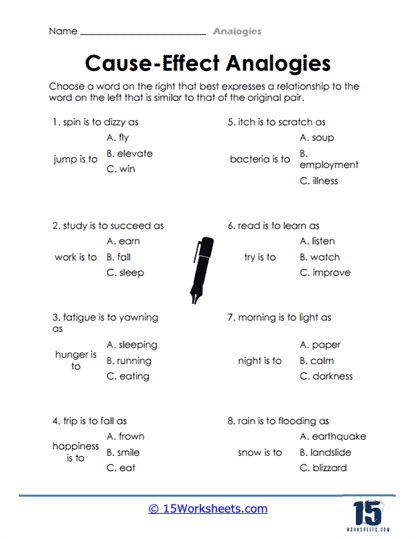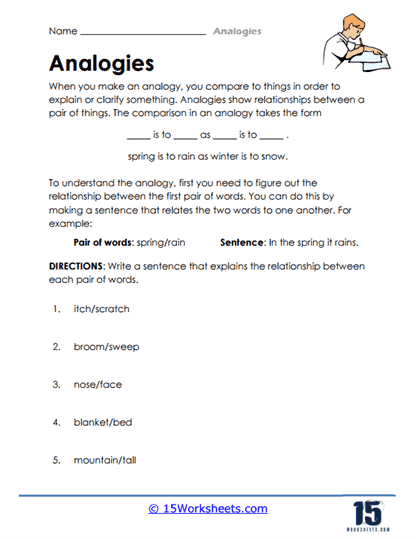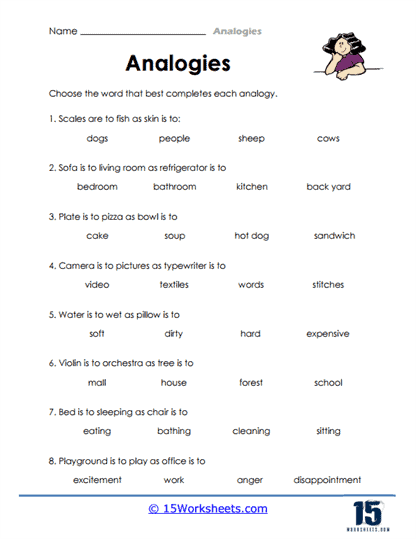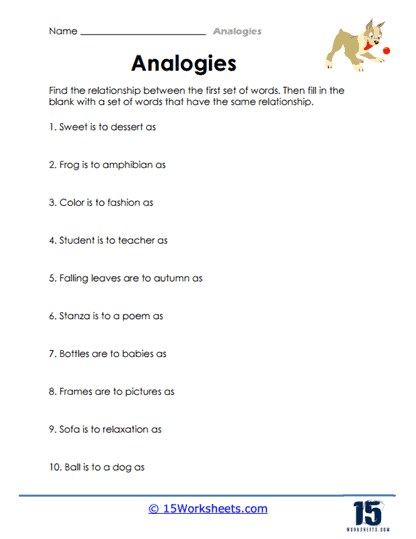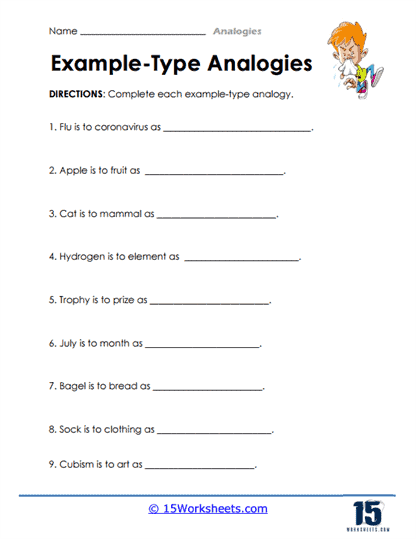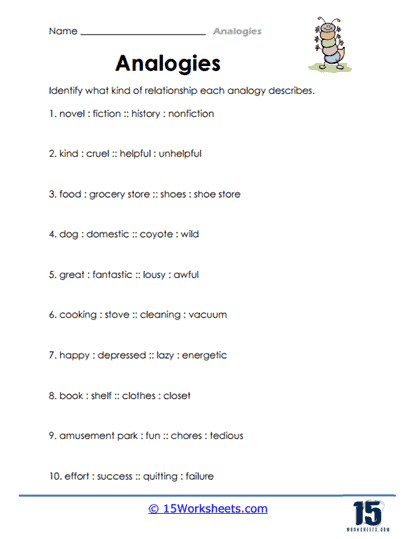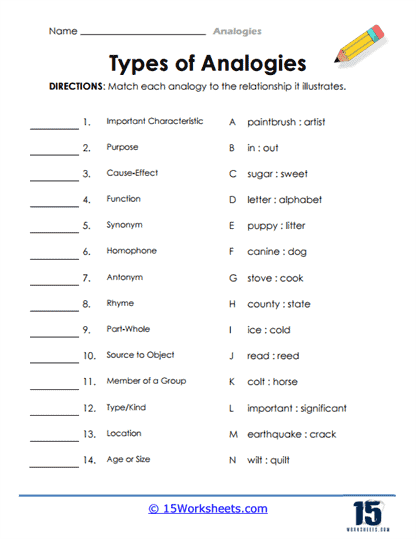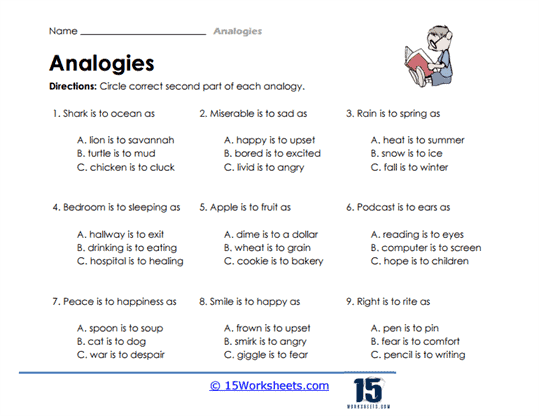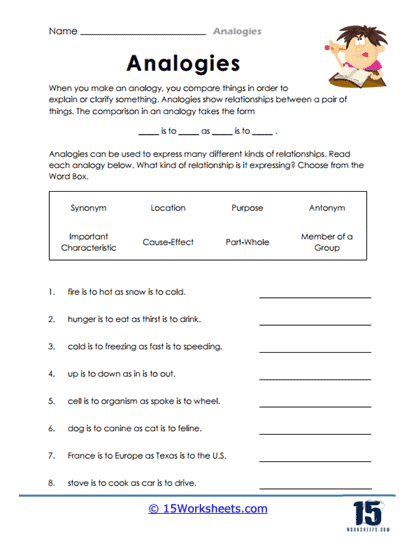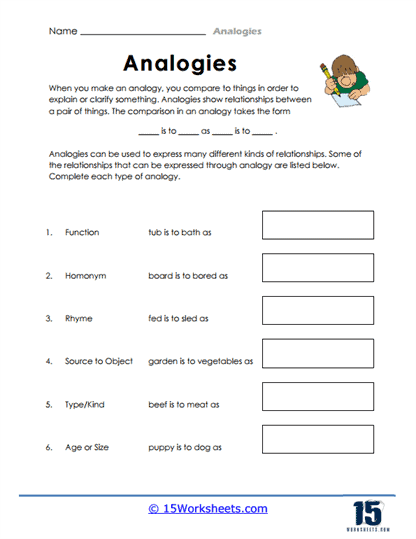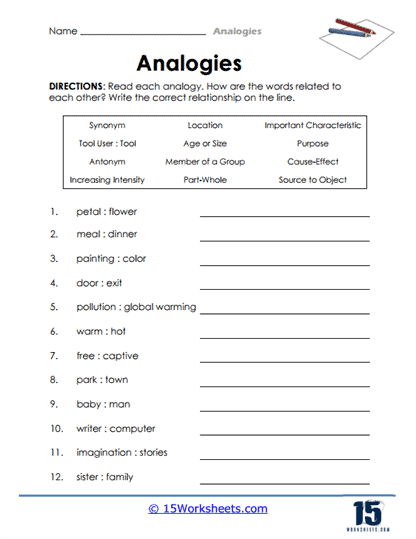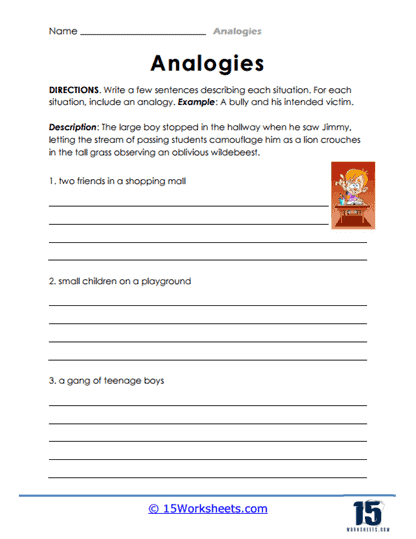Analogies Worksheets
All About These 15 Worksheets
This series of worksheets is designed to help students understand and practice working with analogies. Analogies are comparisons between two things, often used to clarify or explain a complex concept or idea. By completing the exercises in this series, students will become more familiar with different types of analogies and learn how to identify and create analogies themselves. Through these worksheets, students will:
- Complete synonym and antonym analogies, part-whole analogies, and cause-effect analogies;
- Identify the type of relationship between pairs of words in an analogy;
- Supply incomplete analogies with the missing word/s;
- Use context clues to determine the missing words in an analogy;
- And create their own analogies that describes various situations to reinforce their understanding of how analogies can be used to clarify complex concepts or ideas.
What Is an Analogy?
An analogy is a comparison between two things, typically for the purpose of explanation or clarification. Analogies are often used to illustrate complex ideas, simplify difficult concepts, or create memorable associations between ideas.
One efficient way for students to learn about analogies is to start by understanding the basic structure of an analogy. An analogy typically consists of two pairs of related terms, where one pair is known as the “base” and the other pair is the “target.” The base and target are related in the same way that the terms in the first pair are related, but in a different context.
For example, consider the analogy “hand is to glove as foot is to sock.” In this analogy, the base pair is “hand” and “glove,” and the target pair is “foot” and “sock.” The relationship between “hand” and “glove” is that a glove is an article of clothing that is worn on the hand, and the relationship between “foot” and “sock” is that a sock is an article of clothing that is worn on the foot.
Once students understand the basic structure of an analogy, they can practice identifying different types of analogies, such as synonym analogies, antonym analogies, part-whole analogies, and function analogies. They can also practice creating their own analogies by using synonyms, antonyms, part-whole relationships, and other types of relationships between words.
Additionally, students can enhance their vocabulary by studying analogies in context. Reading widely and paying attention to the way that authors use analogies can help students understand the nuances of language and expand their vocabulary. They can also use analogies as a tool for remembering new vocabulary words by associating them with familiar concepts or images.
Their Role in Literature
Analogies are used in literature to convey meaning, create imagery, and enhance the reader’s experience by drawing comparisons between different objects, ideas, or situations. Here are some common ways analogies are employed in literature:
- Metaphors – A metaphor is a type of analogy that describes one thing by directly asserting that it is another, unrelated thing. For example, “The world is a stage,” where the world is being compared to a stage, highlighting the idea that life is like a performance.
- Similes – A simile is another form of analogy that compares two different things using the words “like” or “as.” For example, “Her smile was as warm as the sun,” where the warmth of her smile is being compared to the warmth of the sun.
- Allegories – An allegory is a narrative that uses characters, events, or symbols to represent abstract ideas or principles. It is an extended analogy that conveys a deeper meaning beyond the literal level. For example, George Orwell’s “Animal Farm” is an allegory for the events leading up to the Russian Revolution and the early years of the Soviet Union.
- Symbolism – Symbolism is the use of symbols to represent ideas, emotions, or qualities. It is a form of analogy, as it relies on the connection between the symbol and the idea it represents. For example, a dove is often used as a symbol of peace.
- Allusions – An allusion is a reference to another work of literature, historical event, or cultural element that the reader is expected to recognize. Allusions can serve as analogies when they are used to establish a connection between the text and the external reference, highlighting a particular aspect or theme. For example, a writer may allude to Shakespeare’s “Romeo and Juliet” to evoke the theme of tragic love.
- Parables and fables – Parables and fables are short stories that convey moral lessons through analogies. They use simple, relatable narratives to illustrate a more profound meaning. For example, Aesop’s fable “The Tortoise and the Hare” teaches the lesson that slow and steady progress can lead to success.
By using analogies in these various forms, authors can create vivid imagery, enhance the reader’s understanding of complex ideas, evoke emotions, and add depth to their work. Analogies allow writers to establish connections between their work and the reader’s own experiences, making the text more relatable and engaging.
In summary, analogies play a crucial role in effective communication, as they can bridge gaps in understanding, facilitate learning, and engage audiences in a way that is both accessible and memorable.

